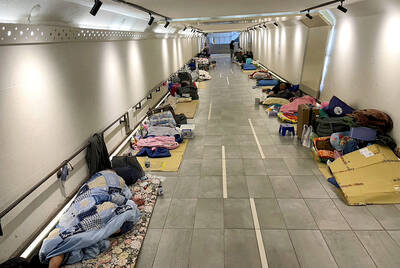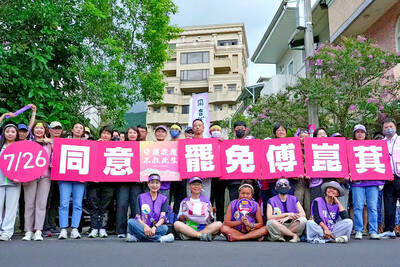A picture may be worth a thousand words, but for paparazzi it can be worth thousands of dollars. Anyone who has picked up a tabloid magazine knows that the most candid images aren't captured by hiding in the bushes, but rather by standing in the middle of the room. Technology has aided both paparazzi and spies alike by miniaturizing the tools of their trade. Your mission -- should you choose to accept it -- is to learn about the smallest cameras on the world market today.
Covert pen and tie cameras

By Bolide International
US$600 and US$250
By far the most easily hidden cameras are ones that don't look like cameras at all. Bolide International has developed two such cameras that have found a market among gumshoes and peeping toms. Their pen and necktie cameras both feature 430 lines of resolution -- compared with perhaps 1,000 in most compact consumer models -- but create surprisingly clear images through the use of a powerful imaging chip and a 0.01 lux rating, which means it can capture images even in low-light areas -- such as bars and bedrooms.
The great drawback to both models is that the pen and necktie carry only the camera's lens, which is then connected by a thin wire to a bulky battery pack and DV camera or transmitter, neither of which is easily concealed in a suit.
You then have the option of storing these in a briefcase (or backpack) that you can never put down -- seriously cramping any spy's style. Of course, if you're wearing a suit and carrying a backpack you don't have any style anyway.
If you're seriously considering either of these devices, I recommend the pen camera. Bolide has ingeniously included a matching pen in their pen set that is an actual writing instrument -- just in case someone asks to borrow it.
Also, the necktie comes in a rather garish paisley print that went out of fashion in 1989.
Logitech Pocket Digital
US$129.95
Perhaps a more sensible and less expensive option is Logitech's new Pocket Digital. First developed by SMaL Camera Technologies as a 6mm-thin, credit-card size prototype, the company licensed their lens, battery and imaging sensor to Logitech, who made it slightly thicker but more functional.
It is among the only cameras I've played with that can actually fit inside a wallet, though subsequently sitting on it might prove disastrous.
Logitech rates the camera as 1.3-megapixels, which would give it one of the highest pixel ratings for cameras in its class. The company's rating comes from interpolating the base VGA resolution up to 1280x960 pixels while trans-ferring images to your computer.
The camera manages its small size by paring down on features. It comes with just 16MB of non-removable memory with no space to upgrade, and 640 x 480 line resolution -- just enough to snap e-mailable photos.
What the Pocket Digital lacks in functionality, it makes up for in being just plain cool. The camera's slide-open-and-shoot design lends the same kind of charisma to photo-taking that cigarette holders did to smoking. Forget being covert, you will instead turn heads!
Snap Mini Camera
US$39.99
If you're looking for a camera that's more a toy than a tool, look at the Snap Mini Camera. Although only 5cm x 5cm, it still serves as both a digital still camera, streaming video camera and USB Web cam all in one. It also features streaming snapshot mode, in which the camera can rapidly capture up to 100 images. With these streaming snapshots and the included software, you can easily create your own AVI video clips.
The Snap Mini comes with a neck strap and, when slung around your neck, looks more like a pendant than a camera. It also comes with a swivel clip to attach it to your belt or backpack, but sliding it into your pocket is easiest.
Despite its several features, the best part about the Snap Mini is its price. Available for about NT$1,000, it is the perfect introductory camera for anyone wanting to get into digital photography. Eight megabytes of storage space and 640 x 480 pixel resolution means your pictures won't be very clear. But what do you want from an NT$1,000 camera?
Casio Exilim
US$320 and US$260
Casio's credit-card sized camera comes in two models: the EX-M1, which has the added feature of being able to play MP3s, and the EX-S1, which doesn't. If you have a library of digital music or want to stealthily record conversations, you'll do well to get the former model. Otherwise, the latter EX-S1 is more economical.
At 1.2 megapixels, this tiny model has one of the better picture resolutions for cameras in its class, comparable to some larger "compact" models. Nonetheless, it is still pared down and lacks many of the features found in slightly larger designs. Also, the buttons are impossibly close together. With the "shoot" and "off" buttons adjacent to one another, I kept turning the camera off when I was tying to take a photo.
Still, it looks cool. And as with Logitech's Pocket Camera, it makes up in design chic what it lacks in functionality -- something none of these cameras have much of. Never mind covert operations, you'll likely want to wear the Exilim around your neck.
Sony Cybershot DSC-U10
US$230
Sony's entry into the miniature camera market is more a matter of having created a marketing blitz than having produced a usable tool. The company seems to have copied Apple's iMac scheme in creating a product that's available in an assortment of cutely collectible colors. In my opinion, it looks somewhat better as a necklace pendant than the Casio models.
That said, it is comparable in functionality to the EX-S1 and priced slightly better. It's more functional, actually, if you consider that is contains a number of useful scene selections, picture effects, editing software and a multi-burst mode that allows you to take five photos 0.5 seconds apart.
What's more, it comes with a line of attachments that improve both on the camera's usability and its cult of personality. You can snap on a wide-angle attachment or -- much to a spy's suiting -- an underwater housing, then stuff it all away in a matching camera bag.
With Sony's Cybershot, you can spy in style.

From the last quarter of 2001, research shows that real housing prices nearly tripled (before a 2012 law to enforce housing price registration, researchers tracked a few large real estate firms to estimate housing price behavior). Incomes have not kept pace, though this has not yet led to defaults. Instead, an increasing chunk of household income goes to mortgage payments. This suggests that even if incomes grow, the mortgage squeeze will still make voters feel like their paychecks won’t stretch to cover expenses. The housing price rises in the last two decades are now driving higher rents. The rental market

July 21 to July 27 If the “Taiwan Independence Association” (TIA) incident had happened four years earlier, it probably wouldn’t have caused much of an uproar. But the arrest of four young suspected independence activists in the early hours of May 9, 1991, sparked outrage, with many denouncing it as a return to the White Terror — a time when anyone could be detained for suspected seditious activity. Not only had martial law been lifted in 1987, just days earlier on May 1, the government had abolished the Temporary Provisions Effective During the Period of National Mobilization for Suppression of the Communist

When life gives you trees, make paper. That was one of the first thoughts to cross my mind as I explored what’s now called Chung Hsing Cultural and Creative Park (中興文化創意園區, CHCCP) in Yilan County’s Wujie Township (五結). Northeast Taiwan boasts an abundance of forest resources. Yilan County is home to both Taipingshan National Forest Recreation Area (太平山國家森林遊樂區) — by far the largest reserve of its kind in the country — and Makauy Ecological Park (馬告生態園區, see “Towering trees and a tranquil lake” in the May 13, 2022 edition of this newspaper). So it was inevitable that industrial-scale paper making would

Hualien lawmaker Fu Kun-chi (傅?萁) is the prime target of the recall campaigns. They want to bring him and everything he represents crashing down. This is an existential test for Fu and a critical symbolic test for the campaigners. It is also a crucial test for both the Chinese Nationalist Party (KMT) and a personal one for party Chairman Eric Chu (朱立倫). Why is Fu such a lightning rod? LOCAL LORD At the dawn of the 2020s, Fu, running as an independent candidate, beat incumbent Democratic Progressive Party (DPP) lawmaker Hsiao Bi-khim (蕭美琴) and a KMT candidate to return to the legislature representing